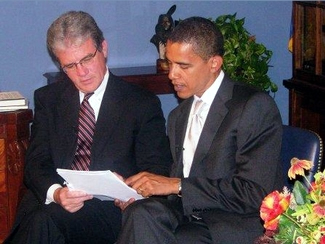|
Bonnie Nardi
Bonnie A. Nardi is an emeritus professor of the Department of Informatics at the University of California, Irvine, where she led the TechDec research lab in the areas of Human-Computer Interaction and computer-supported cooperative work. She is well known for her work on activity theory, interaction design, games, social media, and society and technology. She was elected to the ACM CHI academy in 2013. She retired in 2018. Work Prior to teaching at the University of California, Nardi worked at AT&T Labs, Agilent, Hewlett-Packard and Apple labs. She is among anthropologists who have been employed by high-tech companies to examine consumers' behavior in their homes and offices. Nardi collaborated with Victor Kaptelinin to write ''Acting with Technology: Activity Theory and Interaction Design'' (2009) and ''Activity Theory in HCI: Fundamentals and Reflections'' (2012). These works discuss activity theory and offer a basis for understanding our relationship with technology. Int ... [...More Info...] [...Related Items...] OR: [Wikipedia] [Google] [Baidu] |
Human–computer Interaction
Human–computer interaction (HCI) is the process through which people operate and engage with computer systems. Research in HCI covers the design and the use of computer technology, which focuses on the interfaces between people (users) and computers. HCI researchers observe the ways humans interact with computers and design technologies that allow humans to interact with computers in novel ways. These include visual, auditory, and tactile (haptic) feedback systems, which serve as channels for interaction in both traditional interfaces and mobile computing contexts. A device that allows interaction between human being and a computer is known as a "human–computer interface". As a field of research, human–computer interaction is situated at the intersection of computer science, behavioral sciences, design, media studies, and several other fields of study. The term was popularized by Stuart K. Card, Allen Newell, and Thomas P. Moran in their 1983 book, ''The Psychology of Hum ... [...More Info...] [...Related Items...] OR: [Wikipedia] [Google] [Baidu] |
CSCW
Computer-supported cooperative work (CSCW) is the study of how people utilize technology collaboratively, often towards a shared goal. CSCW addresses how computer systems can support collaborative activity and coordination. More specifically, the field of CSCW seeks to analyze and draw connections between currently understood human psychological and social behaviors and available collaborative tools, or groupware. Often the goal of CSCW is to help promote and utilize technology in a collaborative way, and help create new tools to succeed in that goal. These parallels allow CSCW research to inform future design patterns or assist in the development of entirely new tools. History The origins of CSCW as a field are intertwined with the rise and subsequent fall of office automation as response to some of the criticisms, particularly the failure to address the impact human psychological and social behaviors can have. Greif and Cashman created the term CSCW to help employees seeking t ... [...More Info...] [...Related Items...] OR: [Wikipedia] [Google] [Baidu] |
Online Ethnography
Online ethnography (also known as virtual ethnography or digital ethnography) is an online research method that adapts ethnographic methods to the study of the communities and cultures created through computer-mediated social interaction. As modifications of the term ethnography, cyber-ethnography, online ethnography and virtual ethnography (as well as many other methodological neologisms) designate particular variations regarding the conduct of online fieldwork that adapts ethnographic methodology. There is no canonical approach to cyber-ethnography that prescribes how ethnography is adapted to the online setting. Instead individual researchers are left to specify their own adaptations. Netnography is another form of online ethnography or cyber-ethnography with more specific sets of guidelines and rules, and a common multidisciplinary base of literature and scholars. This article is not about a particular neologism, but the general application of ethnographic methods to online ... [...More Info...] [...Related Items...] OR: [Wikipedia] [Google] [Baidu] |
Tom Coburn
Thomas Allen Coburn (March 14, 1948 – March 28, 2020) was an American politician and medical doctor, physician who served as a United States senator from Oklahoma from 2005 to 2015. A Republican Party (United States), Republican, Coburn previously served as a United States representative from 1995 to 2001. Coburn was an obstetrician who operated a private medical practice in Muskogee, Oklahoma. He was elected to the United States House of Representatives in 1994 United States House of Representatives elections, 1994 as part of the Republican Revolution. After being re-elected twice, Coburn upheld his campaign promise, campaign pledge to serve no more than three consecutive terms and did not seek re-election in 2000 United States House of Representatives elections, 2000. In 2004 United States Senate election in Oklahoma, 2004, he returned to political life with a successful run for the United States Senate. Coburn was re-elected to a second Senate term in 2010 United Stat ... [...More Info...] [...Related Items...] OR: [Wikipedia] [Google] [Baidu] |
Computer-mediated Communication
Computer-mediated communication (CMC) is defined as any human communication that occurs through the use of two or more electronic devices. While the term has traditionally referred to those communications that occur via computer-mediated formats (e.g., instant messaging, email, chat rooms, online forums, social network services), it has also been applied to other forms of text-based interaction such as text messaging. Research on CMC focuses largely on the social effects of different computer-supported communication technologies. Many recent studies involve Internet-based social networking supported by social software. Forms Computer-mediated communication can be broken down into two forms: synchronous and asynchronous. Synchronous computer-mediated communication refers to communication that occurs in real-time. All parties are engaged in the communication simultaneously; however, they are not necessarily all in the same location. Examples of synchronous communicatio ... [...More Info...] [...Related Items...] OR: [Wikipedia] [Google] [Baidu] |
User Interface
In the industrial design field of human–computer interaction, a user interface (UI) is the space where interactions between humans and machines occur. The goal of this interaction is to allow effective operation and control of the machine from the human end, while the machine simultaneously feeds back information that aids the operators' decision-making process. Examples of this broad concept of user interfaces include the interactive aspects of computer operating systems, hand tools, heavy machinery operator controls and Unit operation, process controls. The design considerations applicable when creating user interfaces are related to, or involve such disciplines as, ergonomics and psychology. Generally, the goal of user interface design is to produce a user interface that makes it easy, efficient, and enjoyable (user-friendly) to operate a machine in the way which produces the desired result (i.e. maximum usability). This generally means that the operator needs to provide mi ... [...More Info...] [...Related Items...] OR: [Wikipedia] [Google] [Baidu] |
Alexei Nikolaevich Leont'ev
Aleksei Nikolayevich Leontiev ( rus, Алексе́й Никола́евич Лео́нтьев, p=lʲɪˈonʲtʲjɪf; February 18, 1903 – January 21, 1979), was a Soviet Russian developmental psychologist and philosopher and a founder of activity theory. He was born and died in Moscow. Biography Aleksei Leontiev's life was closely linked to the Lomonosov Moscow State University (MGU). In 1921, he began his studies at the historical-philological faculty of the university. The historical-philological faculty, at the time, included a Department of Philosophy at which Georgy Chelpanov was teaching psychology, and Leontiev studied psychology with him. In 1924, Leontiev graduated from what became the Faculty of Social Sciences. Leontiev worked with Lev Vygotsky and Alexander Luria from 1924 to 1930, collaborating on the development of Marxist psychology as a response to behaviorism and the focus on the stimulus-response mechanism as an explanation for human behavior. Leontiev left ... [...More Info...] [...Related Items...] OR: [Wikipedia] [Google] [Baidu] |
Alexander Luria
Alexander Romanovich Luria (; , ; 16 July 1902 – 14 August 1977) was a Soviet neuropsychology, neuropsychologist, often credited as a father of modern neuropsychology. He developed an extensive and original battery of neuropsychological assessment, neuropsychological tests during his clinical work with brain-injured victims of World War II, which are still used in various forms. He made an in-depth analysis of the functioning of various brain regions and integrative processes of the brain in general. Luria's magnum opus, ''Higher Cortical Functions in Man'' (1962), is a much-used psychological textbook which has been translated into many languages and which he supplemented with ''The Working Brain'' in 1973. It is less known that Luria's main interests, before the war, were in the field of cultural and developmental research in psychology. He became famous for his studies of low-educated populations of nomadic Uzbeks in the Uzbek Soviet Socialist Republic, Uzbek SSR argui ... [...More Info...] [...Related Items...] OR: [Wikipedia] [Google] [Baidu] |
Lev Vygotsky
Lev Semyonovich Vygotsky (, ; ; – June 11, 1934) was a Russian and Soviet psychologist, best known for his work on psychological development in children and creating the framework known as cultural-historical activity theory. After his early death, his books and research were banned in the Soviet Union until Joseph Stalin's death in 1953, with a first collection of major texts published in 1956. His major ideas include: *''The social origin of mind'': Vygotsky believed that human mental and cognitive abilities are not biologically determined, but instead created and shaped by use of language and tools in the process of interacting and constructing the cultural and social environment. *''The importance of mediation'': He saw mediation as the key to human development, because it leads to the use of cultural tools and becomes a pathway for psychological development through the process of interiorization. *''The zone of proximal development'': Vygotsky introduced the concept, ... [...More Info...] [...Related Items...] OR: [Wikipedia] [Google] [Baidu] |
Cultural-Historical Activity Theory (CHAT)
Cultural-historical activity theory (CHAT) is a theoretical framework to conceptualize and analyse the relationship between cognition (what people think and feel) and activity (what people do). The theory was founded by L. S. Vygotsky and Aleksei N. Leontiev, who were part of the cultural-historical school of Russian psychology. The Soviet philosopher of psychology, S.L. Rubinshtein, developed his own variant of activity as a philosophical and psychological theory, independent from Vygotsky's work., V. Lektorsky in Brushlinskii, A. V. 2004 Political restrictions in Stalin's Russia had suppressed the cultural-historical psychology – also known as the Vygotsky School – in the mid-thirties. This meant that the core "Activity theory, activity" concept remained confined to the field of psychology. Vygotsky's insight into the dynamics of consciousness was that it is essentially subjective and shaped by the history of each individual's social and cultural experiences. Since the 1990s, ... [...More Info...] [...Related Items...] OR: [Wikipedia] [Google] [Baidu] |
Library Of Congress
The Library of Congress (LOC) is a research library in Washington, D.C., serving as the library and research service for the United States Congress and the ''de facto'' national library of the United States. It also administers Copyright law of the United States, copyright law through the United States Copyright Office, and it houses the Congressional Research Service. Founded in 1800, the Library of Congress is the oldest Cultural policy of the United States, federal cultural institution in the United States. It is housed in three buildings on Capitol Hill, adjacent to the United States Capitol, along with the National Audio-Visual Conservation Center in Culpeper, Virginia, and additional storage facilities at Fort Meade, Fort George G. Meade and Cabin Branch in Hyattsville, Maryland. The library's functions are overseen by the librarian of Congress, and its buildings are maintained by the architect of the Capitol. The LOC is one of the List of largest libraries, largest libra ... [...More Info...] [...Related Items...] OR: [Wikipedia] [Google] [Baidu] |
United Kingdom Office For Library Networking
Formerly known as The United Kingdom Office for Library and Information Networking, UKOLN was a centre of expertise in digital information management, providing advice and services to the library, information, education and cultural heritage communities. UKOLN was based at the University of Bath and was funded through a mixture of core and project grants. Latterly it received its core funding solely from JISC, but had received core grants previously from the Museums, Libraries and Archives Council and the British Library. History UKOLN traces its roots back to 1977, when Maurice Line initiated the Bath University Programme of Catalogue Research with funding from the British Library. This led to the establishment, in 1979, of a research centre under the directorship of Philip Bryant, again with British Library funding. It was known initially as the Centre for Catalogue Research, and later renamed the Centre for Bibliographic Management (CBM) to reflect its broadening research portf ... [...More Info...] [...Related Items...] OR: [Wikipedia] [Google] [Baidu] |





